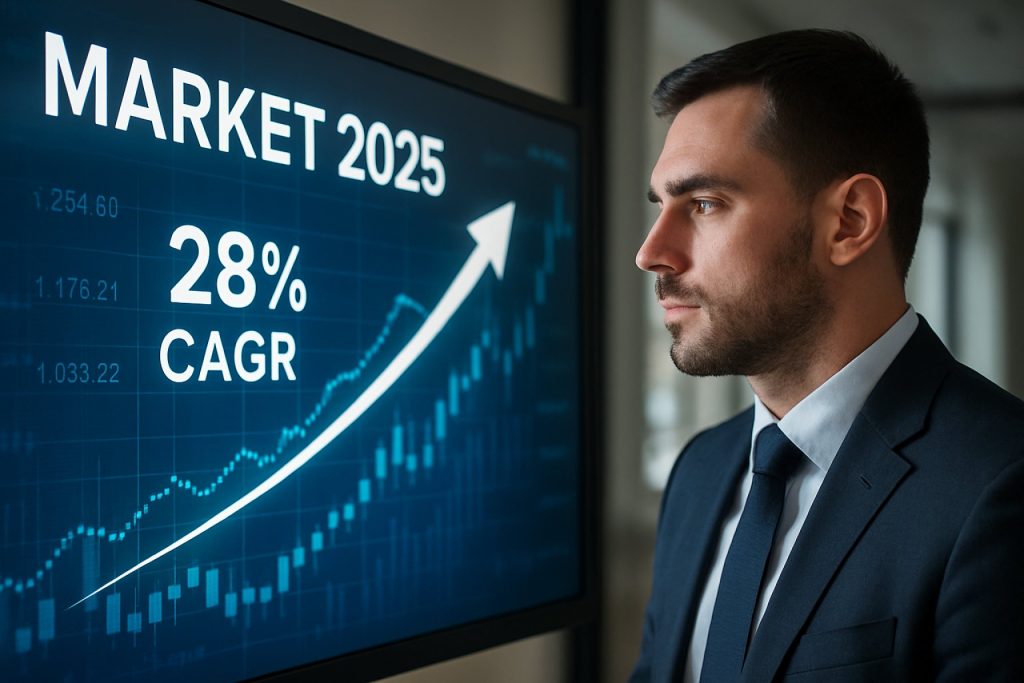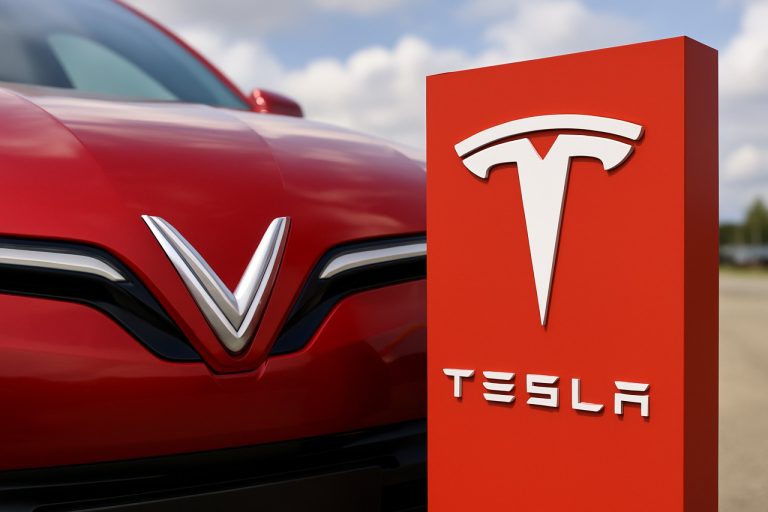
Asset Tokenization Services Industry Report 2025: Market Dynamics, Growth Projections, and Strategic Insights for the Next 5 Years
- Executive Summary & Market Overview
- Key Technology Trends in Asset Tokenization
- Competitive Landscape and Leading Players
- Market Growth Forecasts (2025–2030): CAGR, Revenue, and Volume Analysis
- Regional Analysis: North America, Europe, APAC, and Emerging Markets
- Future Outlook: Regulatory Shifts and Evolving Use Cases
- Challenges and Opportunities: Scalability, Security, and Market Adoption
- Sources & References
Executive Summary & Market Overview
Asset tokenization services refer to the process and platforms that enable the conversion of real-world assets—such as real estate, equities, commodities, or fine art—into digital tokens on a blockchain. These tokens represent ownership or a share in the underlying asset, facilitating fractional ownership, enhanced liquidity, and streamlined transferability. In 2025, the asset tokenization market is experiencing robust growth, driven by increasing institutional adoption, regulatory clarity in key jurisdictions, and the maturation of blockchain infrastructure.
According to Boston Consulting Group, the global market for tokenized assets could reach $16 trillion by 2030, with significant momentum building in 2025 as financial institutions and asset managers accelerate pilot projects and commercial deployments. The adoption of asset tokenization is particularly pronounced in sectors such as real estate, private equity, and debt instruments, where traditional illiquidity and high transaction costs have historically limited investor participation.
Key drivers in 2025 include:
- Regulatory Progress: Jurisdictions such as the European Union, Singapore, and Switzerland have implemented or clarified frameworks for digital assets, providing legal certainty for tokenized securities and fostering cross-border interoperability (European Securities and Markets Authority).
- Institutional Involvement: Major financial institutions, including JPMorgan Chase and Société Générale, have launched or expanded tokenization platforms, signaling mainstream acceptance and driving ecosystem development.
- Technological Advancements: Enhanced blockchain scalability, interoperability protocols, and improved custody solutions have reduced operational risks and costs, making tokenization more accessible to a broader range of asset classes (ConsenSys).
Despite these advances, challenges remain, including fragmented global regulations, the need for standardized token formats, and concerns around cybersecurity and investor protection. Nevertheless, the competitive landscape is rapidly evolving, with both established financial service providers and specialized fintech startups vying for market share. As of 2025, asset tokenization services are positioned as a transformative force in capital markets, promising to unlock new liquidity pools, democratize access to investment opportunities, and reshape the future of asset management.
Key Technology Trends in Asset Tokenization
Asset tokenization services are rapidly evolving in 2025, driven by advancements in blockchain infrastructure, regulatory clarity, and growing institutional adoption. These services enable the digital representation of real-world assets—such as real estate, equities, bonds, and commodities—on distributed ledger technology (DLT), facilitating fractional ownership, enhanced liquidity, and streamlined settlement processes.
One of the most significant technology trends is the emergence of enterprise-grade tokenization platforms. Leading financial institutions and technology providers are deploying robust, interoperable solutions that support a wide range of asset classes. For example, Onyx by J.P. Morgan has expanded its tokenization services to include not only traditional securities but also alternative assets, leveraging permissioned blockchains to ensure compliance and scalability. Similarly, Siemens issued its first digital bond on a public blockchain, demonstrating the growing confidence in tokenized financial instruments.
Interoperability is another key trend, with platforms increasingly supporting cross-chain functionality. This allows tokenized assets to move seamlessly between different blockchain networks, reducing fragmentation and enhancing market efficiency. Initiatives like the SWIFT tokenized asset pilot have demonstrated the feasibility of connecting multiple DLT environments, paving the way for broader adoption by global financial institutions.
Regulatory technology (RegTech) integration is also shaping asset tokenization services. Providers are embedding automated compliance checks, KYC/AML procedures, and real-time reporting into their platforms. This not only streamlines onboarding and transaction monitoring but also addresses regulatory concerns, which have historically been a barrier to institutional participation. The Eurex tokenized asset trading pilot exemplifies how regulated marketplaces are incorporating these features to attract traditional investors.
Finally, the rise of programmable assets—enabled by smart contracts—allows for the automation of complex corporate actions, such as dividend distributions, voting, and compliance with transfer restrictions. This reduces operational costs and errors, while enhancing transparency and trust among participants. As a result, asset tokenization services in 2025 are not only expanding in scope but also maturing in sophistication, setting the stage for mainstream adoption across global capital markets.
Competitive Landscape and Leading Players
The competitive landscape for asset tokenization services in 2025 is characterized by rapid innovation, strategic partnerships, and increasing institutional adoption. The market is populated by a mix of established financial institutions, blockchain-native startups, and technology providers, each vying to capture a share of the growing demand for tokenized assets across real estate, private equity, commodities, and other asset classes.
Leading players in this space include Securitize, which has established itself as a pioneer in compliant digital securities issuance and lifecycle management, and tZERO, a subsidiary of Overstock.com, which operates a regulated alternative trading system (ATS) for digital securities. Both firms have expanded their offerings to include end-to-end tokenization solutions, secondary trading, and investor onboarding, positioning themselves as full-service providers for institutional and retail clients.
Traditional financial institutions are also making significant inroads. J.P. Morgan has developed its Onyx platform, facilitating the tokenization and settlement of assets for institutional clients, while Citi has launched tokenization pilots for private equity and fixed income products. These incumbents leverage their regulatory expertise and client networks to accelerate adoption among large asset managers and corporates.
Blockchain infrastructure providers such as R3 and ConsenSys offer white-label tokenization platforms and interoperability solutions, enabling banks and fintechs to launch their own tokenized asset services. Meanwhile, specialized startups like Tokeny Solutions and Polymath focus on compliance automation and smart contract frameworks tailored to regulatory requirements in multiple jurisdictions.
- Boston Consulting Group projects that the tokenized asset market could reach $16 trillion by 2030, underscoring the high stakes and competitive intensity in the sector.
- Strategic partnerships are common, with firms like Securitize collaborating with BlackRock to tokenize money market funds, and tZERO working with real estate developers to digitize property ownership.
- Regulatory clarity remains a key differentiator, with leading players investing heavily in compliance infrastructure to serve global markets.
In summary, the asset tokenization services market in 2025 is defined by a dynamic mix of fintech innovation, institutional engagement, and regulatory adaptation, with leading players leveraging technology, partnerships, and compliance to gain competitive advantage.
Market Growth Forecasts (2025–2030): CAGR, Revenue, and Volume Analysis
The asset tokenization services market is poised for robust growth between 2025 and 2030, driven by increasing institutional adoption, regulatory clarity, and the expanding use of blockchain technology in capital markets. According to projections by Grand View Research, the global asset tokenization market is expected to register a compound annual growth rate (CAGR) of approximately 20% during this period. This surge is attributed to the growing demand for fractional ownership, enhanced liquidity, and the democratization of traditionally illiquid assets such as real estate, private equity, and fine art.
Revenue forecasts indicate that the market, valued at around USD 2.3 billion in 2024, could surpass USD 5.7 billion by 2030, reflecting both the expansion of service providers and the increasing volume of tokenized assets. MarketsandMarkets projects that the volume of tokenized assets will grow exponentially, with the number of tokenized real estate and securities transactions expected to double annually through 2027, before stabilizing as the market matures.
Regionally, North America and Europe are anticipated to maintain their dominance, accounting for over 60% of global revenues by 2030, due to favorable regulatory environments and the presence of major financial institutions investing in tokenization infrastructure. However, Asia-Pacific is forecasted to exhibit the fastest CAGR, driven by rapid fintech adoption and supportive government initiatives in countries like Singapore and Japan (PwC).
- Institutional Adoption: The entry of major banks and asset managers is expected to accelerate market growth, with institutional-grade platforms facilitating higher transaction volumes and larger deal sizes.
- Tokenization Volume: By 2030, the total value of tokenized assets could reach USD 16 trillion globally, according to Boston Consulting Group, with real estate, debt instruments, and private equity leading the way.
- Service Provider Expansion: The number of regulated asset tokenization service providers is projected to increase by 30% annually, reflecting heightened competition and innovation in the sector.
In summary, the asset tokenization services market is set for significant expansion from 2025 to 2030, underpinned by technological advancements, regulatory progress, and growing investor appetite for digital assets.
Regional Analysis: North America, Europe, APAC, and Emerging Markets
The global asset tokenization services market is experiencing robust growth, with regional dynamics shaped by regulatory environments, technological adoption, and investment trends. In 2025, North America, Europe, Asia-Pacific (APAC), and emerging markets each present distinct opportunities and challenges for asset tokenization service providers.
- North America: North America, led by the United States, remains at the forefront of asset tokenization due to its mature financial markets, advanced blockchain infrastructure, and progressive regulatory initiatives. The U.S. Securities and Exchange Commission (SEC) has provided clearer guidance on digital assets, fostering institutional participation. Major financial institutions and fintechs, such as JPMorgan Chase and Goldman Sachs, are actively piloting tokenized securities and real-world asset platforms. According to PwC, North America accounted for over 40% of global asset tokenization deal volume in 2024, a trend expected to continue in 2025.
- Europe: Europe is rapidly advancing, driven by the European Union’s Markets in Crypto-Assets (MiCA) regulation, which provides a harmonized legal framework for digital assets. Countries like Germany, Switzerland, and France are leading in tokenized real estate and bond issuances. The European Investment Bank has issued multiple tokenized bonds, and platforms such as SIX Digital Exchange are facilitating institutional adoption. Deloitte projects that Europe’s share of tokenized asset value will grow by 30% year-over-year in 2025, fueled by regulatory clarity and cross-border collaboration.
- APAC: The Asia-Pacific region is characterized by rapid digital innovation and government-led blockchain initiatives. Singapore and Hong Kong are regional hubs, with regulators like the Monetary Authority of Singapore supporting tokenization sandboxes and pilot projects. In Japan and South Korea, major banks are launching tokenized asset platforms, particularly in real estate and private equity. KPMG notes that APAC’s asset tokenization market is expected to grow at a CAGR of 35% through 2025, outpacing other regions.
- Emerging Markets: In Latin America, Africa, and the Middle East, asset tokenization is gaining traction as a means to democratize access to investment and improve liquidity in traditionally illiquid markets. Regulatory frameworks are nascent but evolving, with pilot projects in tokenized agriculture, infrastructure, and commodities. According to The World Bank, these regions are leveraging tokenization to attract foreign investment and enhance financial inclusion, though scalability and regulatory harmonization remain challenges.
Overall, while North America and Europe lead in institutional adoption and regulatory clarity, APAC and emerging markets are driving innovation and expanding the addressable market for asset tokenization services in 2025.
Future Outlook: Regulatory Shifts and Evolving Use Cases
The future outlook for asset tokenization services in 2025 is shaped by significant regulatory shifts and the rapid evolution of use cases across financial and real-world assets. As global regulators move toward clearer frameworks, the industry is poised for accelerated institutional adoption and broader integration into traditional financial systems.
Regulatory bodies in major jurisdictions are expected to finalize and implement comprehensive guidelines for tokenized assets by 2025. The European Securities and Markets Authority (ESMA) is advancing the Markets in Crypto-Assets (MiCA) regulation, which will provide legal certainty for asset-backed tokens and stablecoins within the European Union. Similarly, the U.S. Securities and Exchange Commission (SEC) is anticipated to clarify its stance on digital securities, potentially enabling more compliant offerings and secondary trading platforms. These regulatory developments are likely to reduce legal ambiguities, foster investor confidence, and encourage participation from established financial institutions.
On the use case front, 2025 will see asset tokenization services expanding beyond early applications in real estate and private equity. Financial institutions are piloting tokenized versions of government bonds, money market funds, and even carbon credits, leveraging blockchain’s programmability for enhanced transparency and settlement efficiency. According to Boston Consulting Group (BCG), the tokenized asset market could reach $16 trillion by 2030, with 2025 marking a pivotal inflection point as infrastructure matures and regulatory clarity emerges.
- Institutional-grade platforms: Leading banks and asset managers are expected to launch or scale tokenization services, integrating with existing custody and trading systems. J.P. Morgan and Société Générale have already conducted pilot projects, signaling mainstream momentum.
- Interoperability and standards: Industry consortia, such as the Society for Worldwide Interbank Financial Telecommunication (SWIFT), are working on interoperability standards to enable seamless transfer and settlement of tokenized assets across blockchains and traditional rails.
- New asset classes: Tokenization is expected to unlock liquidity in previously illiquid markets, including fine art, intellectual property, and infrastructure projects, broadening the investor base and democratizing access.
In summary, 2025 will be a transformative year for asset tokenization services, driven by regulatory clarity and the emergence of diverse, scalable use cases. The convergence of compliance, technology, and market demand is set to redefine asset ownership and transfer in the digital era.
Challenges and Opportunities: Scalability, Security, and Market Adoption
Asset tokenization services, which involve converting real-world assets such as real estate, art, or equities into digital tokens on a blockchain, are poised for significant growth in 2025. However, the sector faces a complex landscape of challenges and opportunities, particularly in the areas of scalability, security, and market adoption.
Scalability remains a critical hurdle. As tokenization platforms attract more users and handle increasingly diverse asset classes, the underlying blockchain infrastructure must process high transaction volumes efficiently. Current public blockchains, such as Ethereum, have faced congestion and high gas fees, which can deter institutional adoption. Layer-2 solutions and alternative blockchains are being explored to address these issues, but interoperability and standardization are still evolving. According to Deloitte, the ability to scale seamlessly will be a key differentiator for tokenization service providers in 2025.
Security is another paramount concern. The tokenization process introduces new attack vectors, including smart contract vulnerabilities and custodial risks. High-profile breaches and exploits in decentralized finance (DeFi) have underscored the need for robust security protocols. Leading providers are investing in third-party audits, insurance solutions, and advanced cryptographic techniques to bolster trust. PwC notes that regulatory scrutiny is intensifying, with authorities demanding higher standards for compliance, anti-money laundering (AML), and know-your-customer (KYC) procedures.
Market adoption is both a challenge and an opportunity. While tokenization promises increased liquidity, fractional ownership, and broader investor access, mainstream adoption is hampered by regulatory uncertainty and a lack of standardized frameworks. Institutional investors, in particular, require clear legal definitions of digital assets and assurances regarding settlement finality and investor protection. However, as jurisdictions such as the European Union advance comprehensive digital asset regulations (e.g., MiCA), and as major financial institutions like JPMorgan Chase & Co. and Société Générale pilot tokenized asset platforms, confidence is expected to grow.
- Scalability solutions and interoperability standards will be crucial for mass adoption.
- Enhanced security measures and regulatory compliance are non-negotiable for institutional trust.
- Clearer regulations and successful pilot projects by major financial players will accelerate market adoption in 2025.
Sources & References
- European Securities and Markets Authority
- JPMorgan Chase
- Société Générale
- ConsenSys
- Siemens
- Eurex tokenized asset trading pilot
- Securitize
- tZERO
- J.P. Morgan
- ConsenSys
- Tokeny Solutions
- Polymath
- BlackRock
- Grand View Research
- MarketsandMarkets
- PwC
- Goldman Sachs
- European Investment Bank
- SIX Digital Exchange
- Deloitte
- Monetary Authority of Singapore
- KPMG
- The World Bank
- Deloitte



